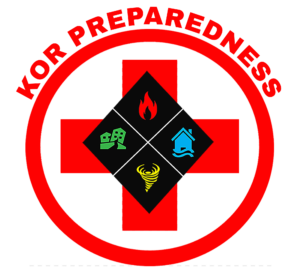A little more complicated is an understatement. If you can buy activated charcoal and stock it, go for it. Making it is a complex and tedious chore. Some websites say it’s so easy. Well, it’s not. I’m not saying it can’t be done, but you have to be patient and respect and understand the process.
You probably already know the benefits related to water purification, poison treatment, and other things. The question is, what do you do if everything goes down and you run out of activated charcoal? Here’s how to roll up your sleeves and make this magic powder.
You need some basic ingredients. Some are easy to find and improvise, others are a bit obscure and somewhat scary. The good news is that there are alternatives to make this process work, and we’ll cover those ingredients and those steps.
Activated Charcoal Ingredients
- Charcoal or the hardwoods that will allow you to make it.
- Calcium Chloride, Zinc Chloride or Lemon Juice.
- Water.
Tools for Making Activated Charcoal
- A hot fire.
- A durable pot with a loose-fitting lid to make the charcoal if you don’t buy your own.
- A hammer or small sledge to crush the charcoal for the first time, plus some plastic bags to contain the charcoal lumps.
- A mortar and pestle, blender, or food processor to reduce the charcoal to dust.
- Fine mesh screen or strainer to separate smaller particulates from larger.
- Pans to capture and allow the charcoal dust to soak in the chemical actifier and then rinse.
- Distilled water for rinsing away the actifier.
- Coffee filters for the final filter.
- Time and patience.
Directions:
We’re not going to cheat so we’ll make this from scratch. There are cheats and we’ll highlight them along the way. You may know a few and please pitch in with any thoughts or suggestions.
Step 1: A Source of Charcoal
You don’t want to buy regular charcoal briquettes to make activated charcoal. Commercially produced charcoal briquettes often have various chemicals added during the manufacturing process.
However, there are brands of charcoal that are commonly referred to as “lump charcoal” with the added promise of “100% natural and chemical free.” Read the label and if you believe it’s true, you can use that as your charcoal source. Otherwise, you’ll have to make your charcoal from scratch.
Step 2: Charcoal Making 101

Charcoal is made when wood is subjected to high heat but denied the oxygen that would cause it to burst into flame. The high heat causes the wood to release various organic materials, smoke and gases and a good amount of cellulose leaving relatively pure carbon.
The simplest way to do this is to put lumps of wood into a large pot with a loose-fitting lid and literally cook your wood over a very hot fire.

Wait until the fire has burned down and remove the lid quickly and carefully to assess your progress. You may have to stir the charcoal chunks around to measure your success and even break up some pieces to make sure they have carbonized through and through.
If not, rekindle the fire and give your pot of wood chunks some more time. When done, rinse the charcoal in water and allow to drain and completely dry on a wire rack or dry surface.

Step 3: Pulverizing Your Charcoal
Your goal is to reduce your charcoal chunks to a fairly, fine powder. You start by breaking the lumps into smaller pea-sized pieces. Placing your charcoal chunks into two plastic bags and gently crushing them with the side of a hammer is a good way to start.

Once you have your charcoal reduced in size, you can use a mortar and pestle to continue to pulverize the charcoal, or you can use a food processor or blender if you’re in a hurry. Charcoal dust will clean up well from your food processor or blender if you use sufficient water, but you might want to do any pulverization outside.
In fact, you should try to do as much of this process outside as you can. As the charcoal turns to powdered carbon, it will drift into the air and coat many things around you. That can be a very invasive mess in the kitchen.

Step 4: Screening Your Charcoal
Regardless of the method, you use to pulverize your charcoal, you’re still going to have some bigger pieces mixed in with your finer sizes. A fine-mesh screen or strainer over a pan is the easiest way to capture your nicely pulverized charcoal and separate it from the bigger pieces

You don’t want to do this on a windy day or you may lose a lot of your charcoal to the wind. Try to find a sheltered area outdoors if you must.

Step 5: Activating The Charcoal
Charcoal is activated using a chemical. The chemical of choice is calcium chloride (CaCl2) added to water, although zinc chloride (ZnCl2) can also be used and there’s a natural source called “lemon juice.” The citric acid in the lemon juice will activate the charcoal in the same way as calcium chloride or zinc chloride.
If you’re shy about chemical names ending chloride, the lemon juice may be the way to go, but remember that even something as common as table salt is sodium chloride.

Calcium chloride can be purchased at some hardware stores, pharmacies, brewer’s supply stores, or on the Internet. The same for Zinc chloride.
While they’re both a benign chemical when rinsed from the charcoal after the activation process, they can become extremely warm when added to water up to 130 degrees Fahrenheit. The dilution is a 25 percent concentrated solution in a mason jar with a lid and then gently shaken.

To make the solution, dissolve 250 g of calcium chloride or zinc chloride in 1000 ml of water. You could also think of it as one ounce of calcium chloride to 4 ounces of water. This should be enough to activate up to 8 ounces or a half pound of pulverized charcoal.
Remember to wear gloves when handling the jar if using calcium chloride or zinc chloride because the solution will get hot. If you’re using lemon juice, 1/2-cup of pulp-free lemon juice will suffice. Mix the solution with your charcoal until you have a paste-like slurry and cover.
The liquid calcium chloride solution, zinc chloride solution, or the lemon juice is allowed to soak in the charcoal for 24 hours in the covered pan. The solution should be at least a slurry with some liquid above the surface.
When done, the actifying solution needs to be rinsed away with water.
Step 6: Rinsing Away The Actifier
The easiest setup for rinsing your charcoal is a coffee filter in a mesh strainer suspended high over a bowl. This will take some time and the charcoal should be rinsed 3 times using distilled water.

Distilled water is pure H20. You don’t want to use well water because the calcium, iron, and lime in the well water will be captured by the charcoal and reduce its efficiency. City water often has fluoride and the same will happen as the charcoal captures the fluoride.
This is a time-consuming process and the added investment in a gallon or two of distilled water is well worth it.
Step 7. The Final Drying Step
You can allow your activated charcoal to air-dry or dry it in an oven at a relatively low temperature of 225 degrees Fahrenheit for 2 to 4 hours. Check it from time to time to see when it’s thoroughly dry.

Step 8: Storing Your Activated Charcoal
The best way to store activated charcoal is in a canning jar with a tight-fitting lid. You don’t want to allow activated charcoal to be exposed to air or chemicals in the air because odors or even humidity will degrade the charcoal as it absorbs whatever it is exposed to.

Another possibility is to encapsulate the activated charcoal in gel caps and store them in a jar. Activated charcoal is used to filter air, water, and as an antidote for poisons and exposure to heavy metals when ingested. The gel caps are the recommended way to take activated charcoal in the event of poisoning.
You’re Done!
You can scale up this recipe or scale it down. It all depends on how much you intend to use. It should store indefinitely if kept dry and well packaged.
Like this post? Don’t forget to Pin It on Pinterest!





















































